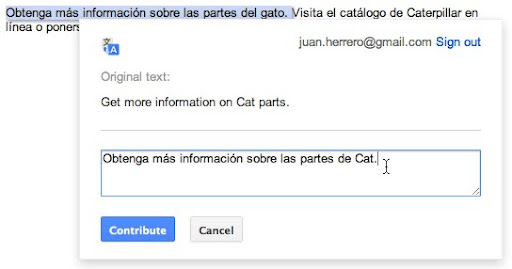Thursday, May 31, 2012
(Cross-posted on the Google Translate Blog)
Since we first launched the Website Translator plugin back in September 2009, more than a million websites have added the plugin. While we've kept improving our machine translation system since then, we may not reach perfection until someone invents full-blown Artificial Intelligence. In other words, you'll still sometimes run into translations we didn't get quite right.
So today, we're launching a new experimental feature (in beta) that lets you customize and improve
the way the
Website Translator
translates your site. Once you add the customization meta tag to a webpage, visitors will see your
customized translations whenever they translate the page, even when they use the translation
feature in
Chrome
and
Google Toolbar.
They'll also now be able to
'suggest a better translation'
when they notice a translation that's not quite right, and later you can accept and use that
suggestion on your site.
To get started:
-
Add the
Website Translator
plugin and customization
metatag to your website - Then translate a page into one of 60+ languages using the Website Translator
To tweak a translation:
- Hover over a translated sentence to display the original text
- Click on 'Contribute a better translation'
- And finally, click on a phrase to choose an automatic alternative translation —or just double-click to edit the translation directly.
For example, if you're translating your site into Spanish, and you want to translate Cat not to gato but to Cat, you can tweak it as follows:

If you're signed in, the corrections made on your site will go live right away—the next time a visitor translates a page on your website, they'll see your correction. If one of your visitors contributes a better translation, the suggestion will wait until you approve it. You can also invite other editors to make corrections and add translation glossary entries. You can learn more about these new features in the Help Center.
This new experimental feature is currently available without payment. We hope this feature, along with Translator Toolkit and the Translate API, can provide a low cost way to expand your reach globally and help to break down language barriers.
